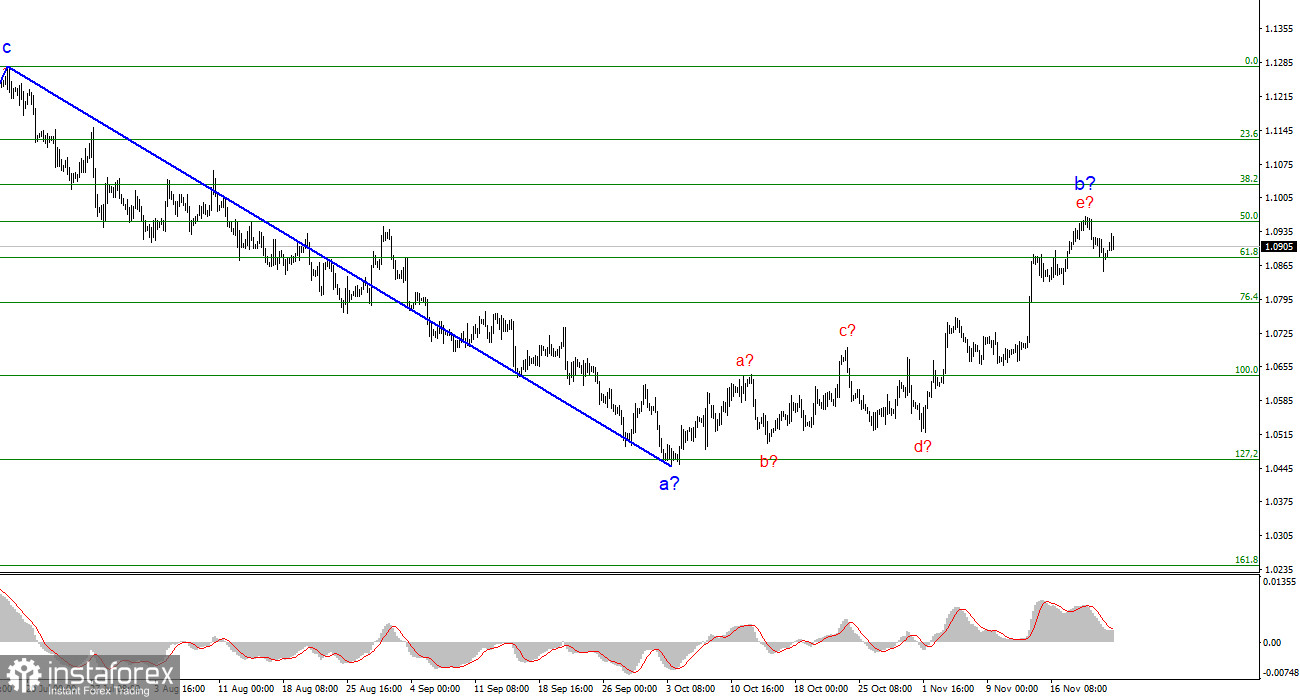The European currency is still in contemplation, or at a crossroads, as anyone sees fit. In the last few days, we have observed a retreat of quotes from previously reached highs, which can be considered the beginning of building the presumed wave 3 or C, which I have been anticipating for several weeks. However, this retreat needs to be stronger so that it is easier to speak confidently about the transition to the construction of a downward wave. Especially since the first mark on the path of the pair's decline stopped it (1.0880).

Regarding central banks, their rates, and monetary policy, it is better to remain silent now than to speak. Over the past three months, when all three central banks paused, we have seen and heard so many speeches by officials of these banks that we are completely confused. Even without breaking down into specific central banks, most bankers do not support further rate hikes in the European Union, the US, or the UK. But in each bank, a few officials still either "allow" a new increase or "support" it.
If you look at the overall picture impartially, rates will not rise anymore. At least until inflation starts to accelerate sharply (if that moment comes).
In this scenario, none of the major currencies—the euro, the pound, or the dollar—currently exhibit a more "hawkish" sentiment from their central banks.
The discussion of rate cuts has begun in parallel with the topic of rate hikes. Even though representatives of all central banks have clarified that there will be no monetary policy easing in the next six months, the market continues to guess when this process will start. Today, the head of the Bundesbank, Joachim Nagel, stated, "It is still too early to talk about rate cuts." He also noted that rates should remain high because the risks associated with inflation remain higher. He also stated that he is still determining about reaching the peak in rates, and inflation may increase in the coming months. As we can see, in one speech by one official, there can be both "hawkish" and "dovish" notes.
Based on the analysis, the construction of a downward wave continues. Targets around the 1.0463 mark have been perfectly worked out, and an unsuccessful attempt to break this mark indicated a transition to the construction of a corrective wave. Wave 2 or B has taken on a completed form, so in the near future, I expect the construction of an impulsive descending wave 3 or C with a significant decline in the pair I still recommend selling with targets located below the low of wave 1 or A. While wave 2 or B takes on a more extended form, sales should be cautious, or even better, to wait for signals of the wave's completion.
The wave pattern of the pound/dollar pair suggests a decline within the descending trend segment. The maximum the British currency can count on is a correction. I recommend selling the pair with targets below the 1.2068 mark because wave 2 or B should ultimately end. Initially, sales should be insignificant because there is always a risk of complicating the existing wave. Also, a contracting triangle is visible, which is a precursor to the completion of the movement.





















